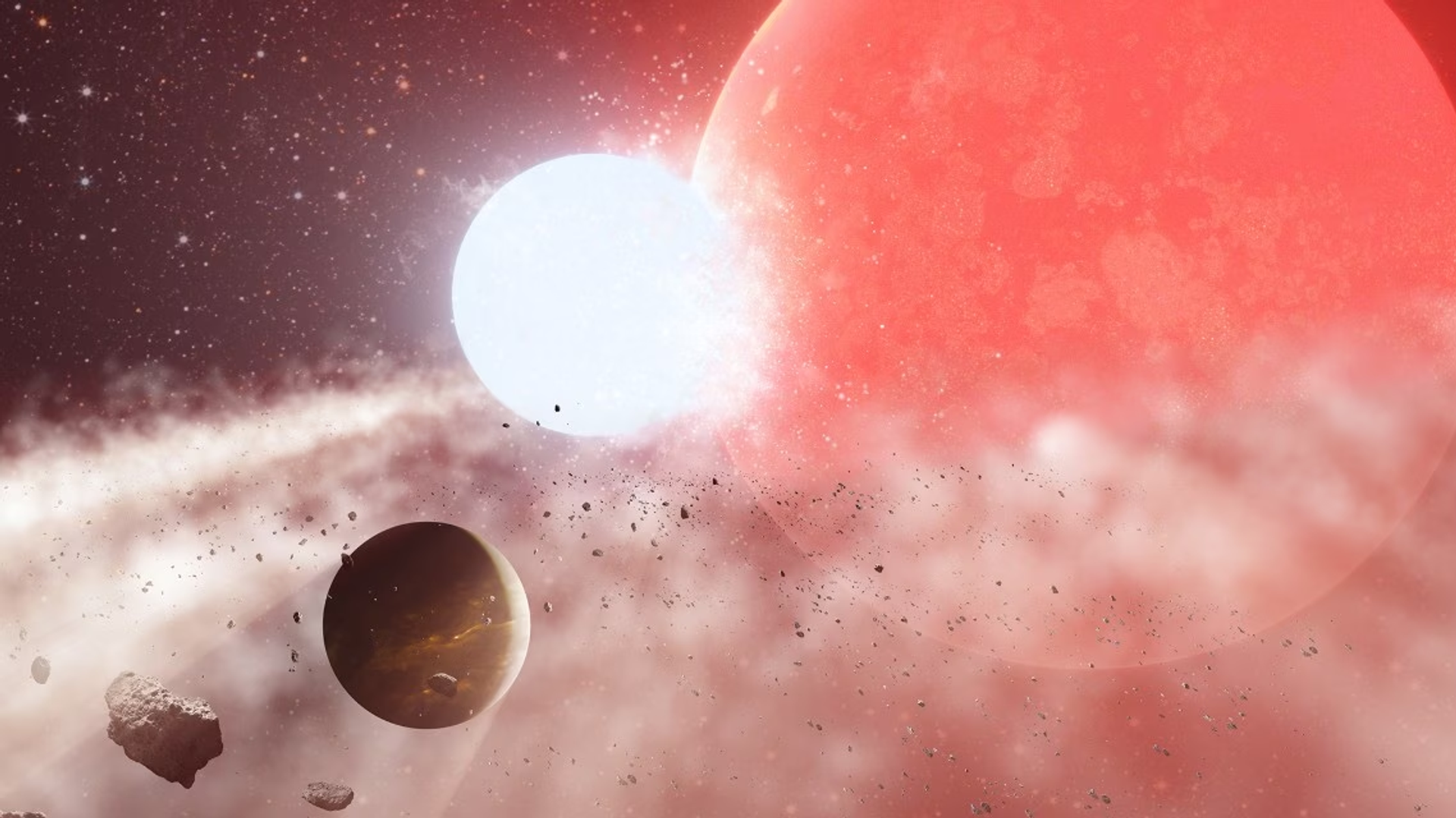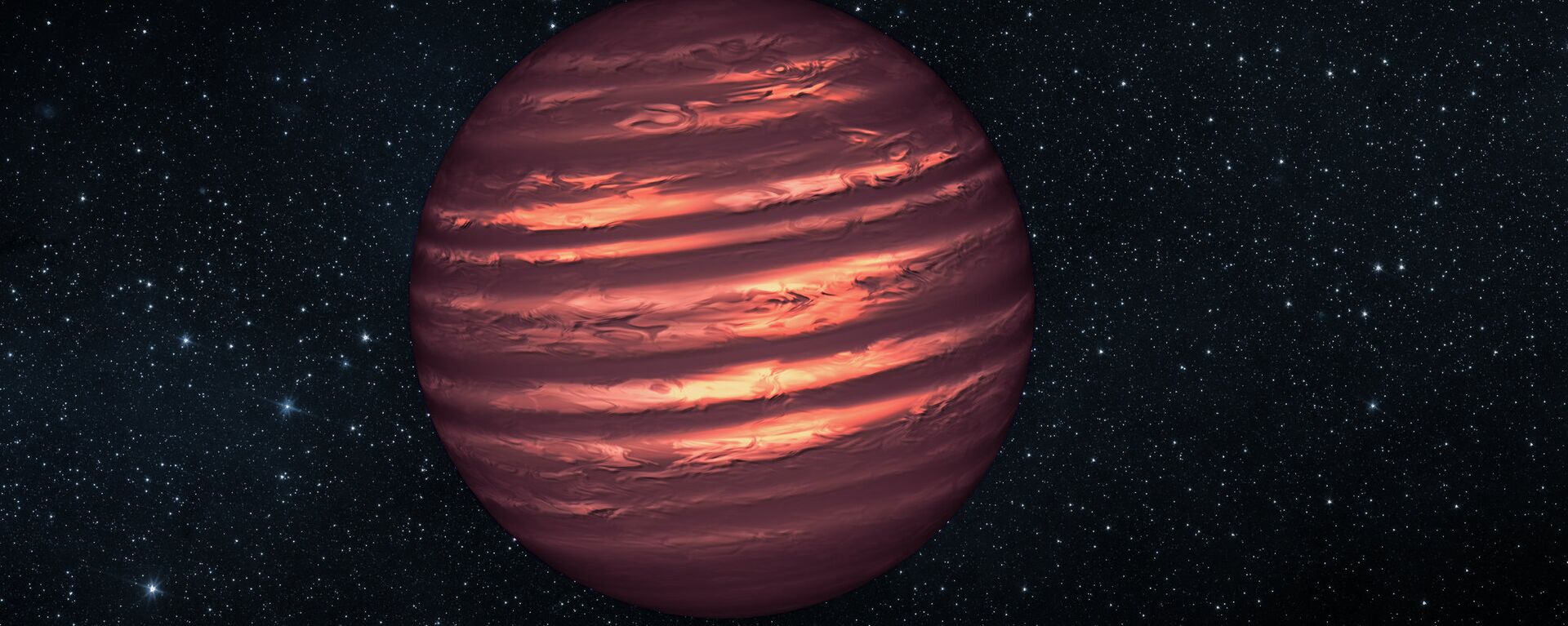https://sputnikglobe.com/20230630/astronomers-find-puzzling-planet-that-shouldnt-exist-orbiting-red-giant-star-1111590554.html
Astronomers Find Puzzling Planet That ‘Shouldn’t Exist’ Orbiting Red Giant Star
Astronomers Find Puzzling Planet That ‘Shouldn’t Exist’ Orbiting Red Giant Star
Sputnik International
Orbiting the red giant star Baekdu about 520 light-years from Earth is a Jupiter-sized planet called Halla. However, there’s something extremely unusual about Halla: it shouldn’t exist anymore.
2023-06-30T21:25+0000
2023-06-30T21:25+0000
2023-06-30T21:24+0000
beyond politics
university of sydney
red giant
planet
astronomy
science & tech
https://cdn1.img.sputnikglobe.com/img/07e7/06/1e/1111590398_0:0:1138:640_1920x0_80_0_0_fcc4fb93d6997ab6805a52f3eeec2cba.png
While at the present, Halla orbits about 0.49 astronomical units (AU) away from its host star, or about half the distance from the Earth to our sun, that wasn’t always the case. Baekdu is a red giant in the late stages of its life, having already shrunk back from a period in which it had ballooned outward to many times its present diameter.According to the work of a group of astronomers based at the University of Sydney in Australia, and published on Wednesday in Nature, that diameter was once wider than Halla’s orbit, meaning the star should’ve swallowed the planet and incinerated it. Yet, it survived.The team's findings detailed Baekdu’s surface inflated outward to roughly 1.5 times the radius of Halla’s orbit. The bizarre behavior is a natural part of a star’s life, as its hydrogen fuel becomes converted into helium and the fusion process changes. It’ll happen to our sun, too, and the Earth will most likely be engulfed along with Mercury and Venus, and possibly also Mars.The astronomers have considered a range of options for explaining Halla’s survival, but none is really satisfactory. One possible explanation is that Halla formed after Baekdu’s massive expansion phase; another is that Baekdu was once part of a binary star system, but consumed its partner star, which stopped it from expanding to consume Halla. A third possibility is that Halla is a captured rogue planet, or that it migrated to its present orbit from further out in the Baekdu system; however, close studies of the planet’s orbit suggest this is unlikely."If the Baekdu system originally consisted of two stars, their merger could have prevented any one of them from expanding sufficiently to engulf the planet.”Astronomers have also recently discovered a binary star system with multiple planets for the second time. While single-planet binary systems have been found to be common, scientists had believed binary star systems were too unstable to support multiple stable planetary orbits.
https://sputnikglobe.com/20230530/up-to-one-third-of-planets-in-small-stars-goldilocks-zones-could-be-habitable-1110801847.html
Sputnik International
feedback@sputniknews.com
+74956456601
MIA „Rossiya Segodnya“
2023
News
en_EN
Sputnik International
feedback@sputniknews.com
+74956456601
MIA „Rossiya Segodnya“
Sputnik International
feedback@sputniknews.com
+74956456601
MIA „Rossiya Segodnya“
astronomy; baekdu; halla; planet; red giant
astronomy; baekdu; halla; planet; red giant
Astronomers Find Puzzling Planet That ‘Shouldn’t Exist’ Orbiting Red Giant Star
Orbiting the red giant star Baekdu about 520 light-years from Earth is a Jupiter-sized planet called Halla. However, there’s something extremely unusual about Halla: it shouldn’t exist anymore, according to all-known scientific reasoning.
While at the present, Halla orbits about 0.49 astronomical units (AU) away from its host star, or about half the distance from the Earth to our sun, that wasn’t always the case. Baekdu is a red giant in the late stages of its life, having already shrunk back from a period in which it had ballooned outward to many times its present diameter.
According to the work of a group of astronomers based at the University of Sydney in Australia, and
published on Wednesday in Nature, that diameter was once wider than Halla’s orbit, meaning the star should’ve swallowed the planet and incinerated it. Yet, it survived.
"Engulfment by a star normally has catastrophic consequences for close orbiting planets," study co-author Daniel Huber, an astronomer and research fellow at the Sydney Institute for Astronomy, said in a statement. "When we realized that Halla had managed to survive in the immediate vicinity of its giant star, it was a complete surprise."
The team's findings detailed Baekdu’s surface inflated outward to roughly 1.5 times the radius of Halla’s orbit. The bizarre behavior is a natural part of a star’s life, as its hydrogen fuel becomes converted into helium and the fusion process changes. It’ll happen to our sun, too, and the Earth will most likely be engulfed along with Mercury and Venus, and possibly also Mars.
The astronomers have considered a range of options for explaining Halla’s survival, but none is really satisfactory.
One possible explanation is that Halla formed after Baekdu’s massive expansion phase; another is that Baekdu was once part of a binary star system, but consumed its partner star, which stopped it from expanding to consume Halla. A third possibility is that Halla is a captured rogue planet, or that it migrated to its present orbit from further out in the Baekdu system; however, close studies of the planet’s orbit suggest this is unlikely.
"The system was more likely similar to the famous fictional planet Tatooine from 'Star Wars,' which orbits two suns," said study co-author Tim Bedding, an astronomy professor at the University of Sydney.
"If the Baekdu system originally consisted of two stars, their merger could have prevented any one of them from expanding sufficiently to engulf the planet.”
Astronomers have also
recently discovered a binary star system with multiple planets for the second time. While single-planet binary systems have been found to be common, scientists had believed binary star systems were too unstable to support multiple stable planetary orbits.



